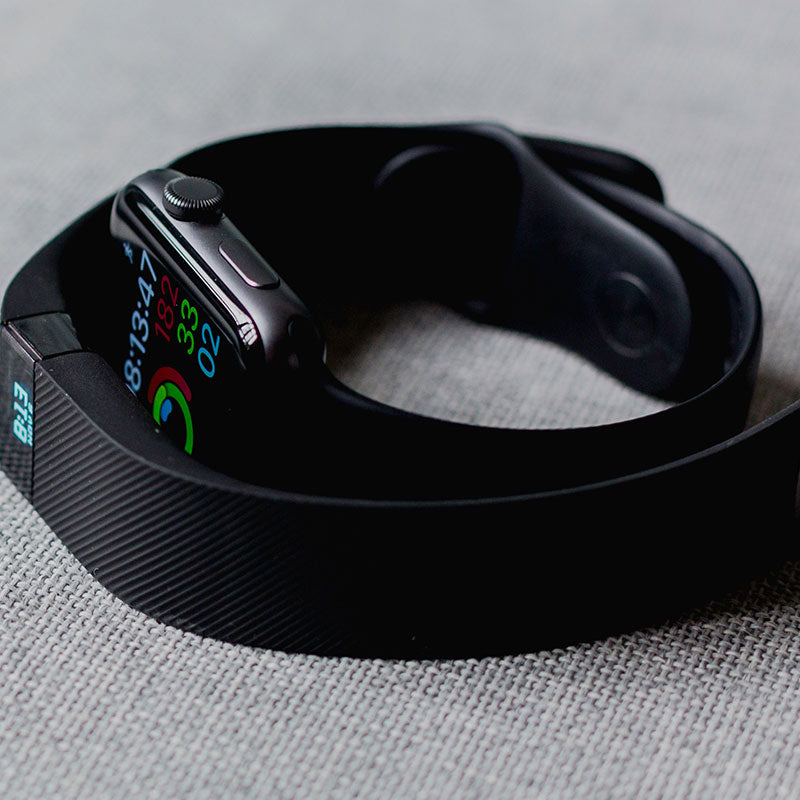Insulin pump or MDI?

I've been using the Omnipod insulin pump since May 2016 and want to share my experience and go over the pros and cons of being on an insulin pump.
I was diagnosed with Type 1 diabetes in November 2014. Very soon my endocrinologist asked me if I was interested in going on the pump. She is very pro-technology and up to date on the latest technologies which is great.
One of the main reasons why I wasn't interested in having a pump was that I didn't want a device attached to me all the time, specially with tubes. I found it would get in the way when I wore a dress or tight clothes.
I went to a JDRF community event in November 2015 and there were representatives from the major pump companies. That's where I was introduced to the Omnipod and learned about this great tubeless pump. Before I didn't know that a pump without tubing even existed. I got a brochure and did a bit of research about how it works and was intrigued.
I got the free sample kit which is a pod without the needle to see how it would feel to have the pod on. I put it on my abdomen and it didn't bother me. Shortly after I decided to go ahead and try the Omnipod so I filled out the paperwork and got a quote from my insurance of how much they would pay.
When I got the Omnipod a representative from the company came to my house and helped me set it up. It has a lot of settings and he went over everything and explained. For the first days/weeks after I uploaded my data so he could see if everything was going well and he helped me make the necessary adjustments to get the settings perfect.
The Omnipod has a PDM (personal diabetes manager) that is a remote to give orders to the pod to give insulin. The pod is worn for 3 days and constantly gives micro dosages of insulin (basal). The pod location should be changed every time you put on a new pod. The sites I use are the abdomen, back of the arms and lower back. I have seen people wear it in other locations such as thighs or calves with good results.
When eating, you insert the amount of carbs you are going go eat and the PDM calculates how much insulin you need depending on your insulin ratios, insulin ratios etc. The PDM also has a built-in glucometer so you don't have to carry an extra meter.
I will go over the pros and cons of having a pump from my experience:
No injections

The biggest pro is not having to inject yourself multiple times a day. You just have to press a few buttons and you will get the amount of insulin you need. You can always add extra insulin for example if you decide after you meal that you want to have a dessert.
In many social settings it is very convenient to have a pump. For example at parties or events where food is being consumed over a long period of time. You can have multiple courses with a good pause between without having to inject multiple times.
It's also handy if you are out and about and you don't want to go somewhere private to inject (if that's what you normally do). If you are riding in a car or a train you don't have to worry about using needles.
Better control

An insulin pump has a lot of settings that you can't do effortlessly with injections. One of them is Extended bolus for meals that are consumed over a longer period, or carby or fatty food like pizza. When you eat pizza the blood sugar raises over a longer time than usual and is often high 3 hours after eating.
By using the Extended bolus feature on the pump you can adjust the dosage so that you get an x amount of insulin right away and an x amount later, e.g. 50% now and 50% after one hour. This way the blood sugar will become more stable.
If the blood sugar is too high the pump recommends a certain amount of insulin to lower it to a target value. When you get the pump there are a lot of settings that are programmed such as how much 1 unit of insulin lowers your blood sugar, how much basal insulin you need per hour and how much you need for meals. For me, I don't have the same ratio of insulin that I need for breakfast, lunch or dinner. I need more insulin at night than in the morning.
You can also program special settings like increasing or decreasing the basal rate for a certain amount of time. This is very handy when you plan on exercising, then you can decrease or turn off the basal insulin. If the blood sugar is on the lower side before bedtime you can lower the basal insulin for the night so you don't need to eat before going to bed. When I was on injections I would have to eat before going to bed if my blood sugar was under a certain level.
If you are sick you usually need more insulin so you can increase the basal rate for that time.
Less calculations
If you are not too keen on math then the pump will make your life easier. The only thing you have to do is enter the amount of carbs you plan to eat and the pump does all the calculations. It takes into account IOB (insulin on board) which is an estimate of how much insulin is still active from the last bolus and it calculates how much insulin you need according to the time of day and what your blood sugar is at that moment.

CONS
You always have a device attached to you. I feel this is less of an issue with the Omnipod personally as I often forget I have it on. If you have a pump with tubing it might get in the way with certain outfits and you might have to find some creative solutions.
Cost
Depending on where you live and what your insurance coverage is it can be quite expensive to have a pump. If you have private insurance you might have to pay 20% of the cost yourself though some insurance companies and government plans offer full coverage.
It can break
If the pump breaks the blood sugar can elevate very quickly since you don't have any basal insulin either. You could go into DKA (Diabetic Ketoacidosis) within a few hours and you'll have to take precautions and even go back to injections until you have a functioning pump again.You should always carry a backup insulin pen in case of emergencies since it's very serious not to have any insulin.
You can't always wear it
The Omnipod is waterproof but it's not recommended to wear it in high temperatures like in a sauna or in the hot tub for a long time since the insulin can overheat. If you have a tubed pump you can disconnect it for a short time instead.
It's not recommended to wear a pump in body scanners at the airport or some medical scans like a CT scan.
I feel the pros greatly outweigh the cons and having a pump gives me way more freedom than before.





